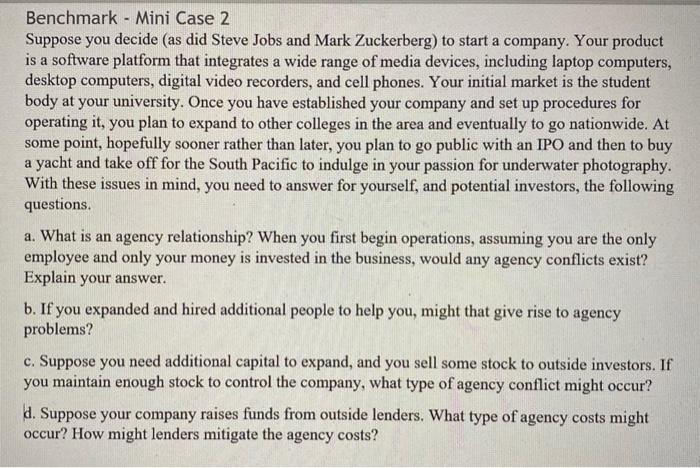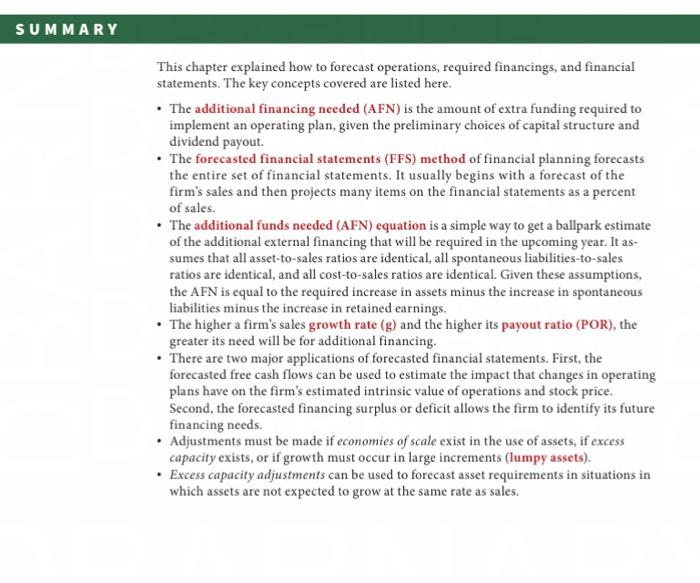Mini Case in Financial Management: Theory and Practice. Using complete sentences and academic vocabulary, please answer questions a through d.
While APA style is not required for the body of this assignment, solid academic writing is expected, and documentation of sources should be presented using APA formatting guidelines
Benchmark - Mini Case 2 Suppose you decide (as did Steve Jobs and Mark Zuckerberg) to start a company. Your product is a software platform that integrates a wide range of media devices, including laptop computers, desktop computers, digital video recorders, and cell phones. Your initial market is the student body at your university. Once you have established your company and set up procedures for operating it, you plan to expand to other colleges in the area and eventually to go nationwide. At some point, hopefully sooner rather than later, you plan to go public with an IPO and then to buy a yacht and take off for the South Pacific to indulge in your passion for underwater photography. With these issues in mind, you need to answer for yourself, and potential investors, the following questions. a. What is an agency relationship? When you first begin operations, assuming you are the only employee and only your money is invested in the business, would any agency conflicts exist? Explain your answer. b. If you expanded and hired additional people to help you, might that give rise to agency problems? c. Suppose you need additional capital to expand, and you sell some stock to outside investors. If you maintain enough stock to control the company, what type of agency conflict might occur? H. Suppose your company raises funds from outside lenders. What type of agency costs might occur? How might lenders mitigate the agency costs? SUMMARY This chapter explained how to forecast operations required financings, and financial statements. The key concepts covered are listed here. The additional financing needed (AFN) is the amount of extra funding required to implement an operating plan, given the preliminary choices of capital structure and dividend payout. The forecasted financial statements (FFS) method of financial planning forecasts the entire set of financial statements. It usually begins with a forecast of the firm's sales and then projects many items on the financial statements as a percent of sales. The additional funds needed (AFN) equation is a simple way to get a ballpark estimate of the additional external financing that will be required in the upcoming year. It as- sumes that all asset-to-sales ratios are identical, all spontaneous liabilities-to-sales ratios are identical, and all cost-to-sales ratios are identical. Given these assumptions, the AFN is equal to the required increase in assets minus the increase in spontaneous liabilities minus the increase in retained earnings. The higher a firm's sales growth rate (g) and the higher its payout ratio (POR), the greater its need will be for additional financing. . There are two major applications of forecasted financial statements. First, the forecasted free cash flows can be used to estimate the impact that changes in operating plans have on the firm's estimated intrinsic value of operations and stock price. Second, the forecasted financing surplus or deficit allows the firm to identify its future financing needs. Adjustments must be made if economies of scale exist in the use of assets, if excess capacity exists, or if growth must occur in large increments (lumpy assets). Excess capacity adjustments can be used to forecast asset requirements in situations in which assets are not expected to grow at the same rate as sales








